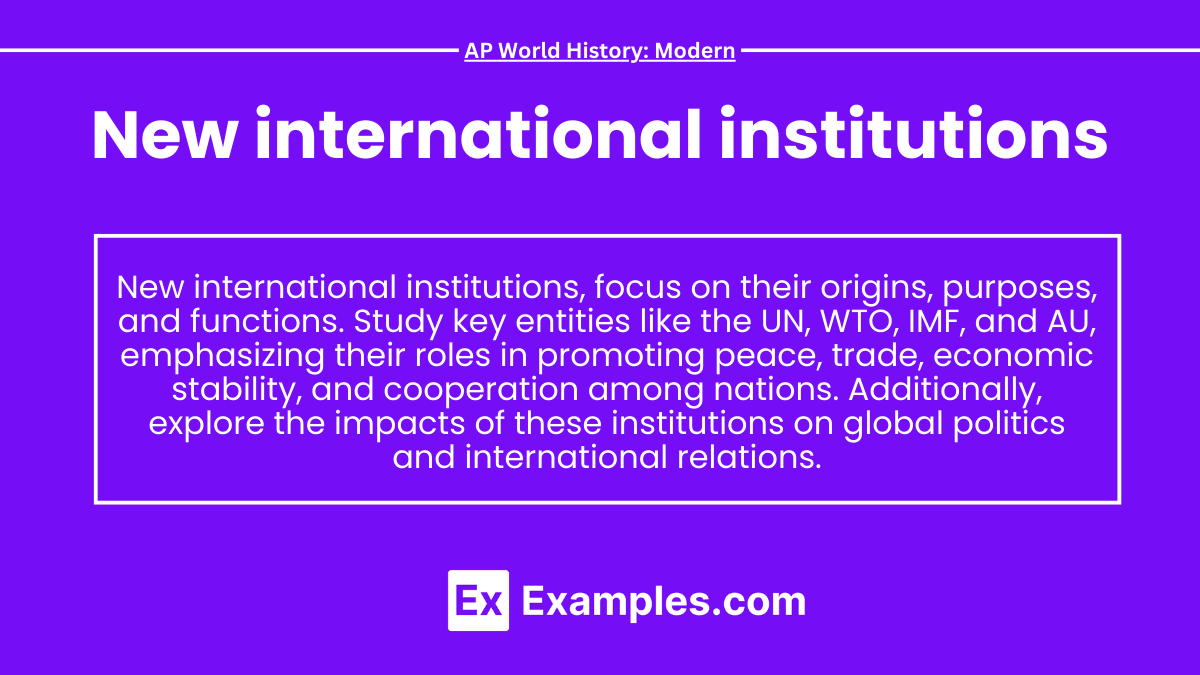In the aftermath of World War II, new international institutions emerged to foster global cooperation, economic stability, and peace. These entities, including the United Nations, IMF, and World Bank, aimed to address pressing global challenges and promote collective security, reshaping international relations and influencing the modern world.
Learning Objective
In studying “New International Institutions” for AP World History: Modern, you should learn to identify key international organizations established after major global conflicts. Analyze their roles in promoting cooperation, peace, and economic development, and evaluate their impacts on international relations and global governance. It’s also important to explore how these institutions addressed global issues, providing a comprehensive understanding of their influence on world events and policies.
1. United Nations (UN)
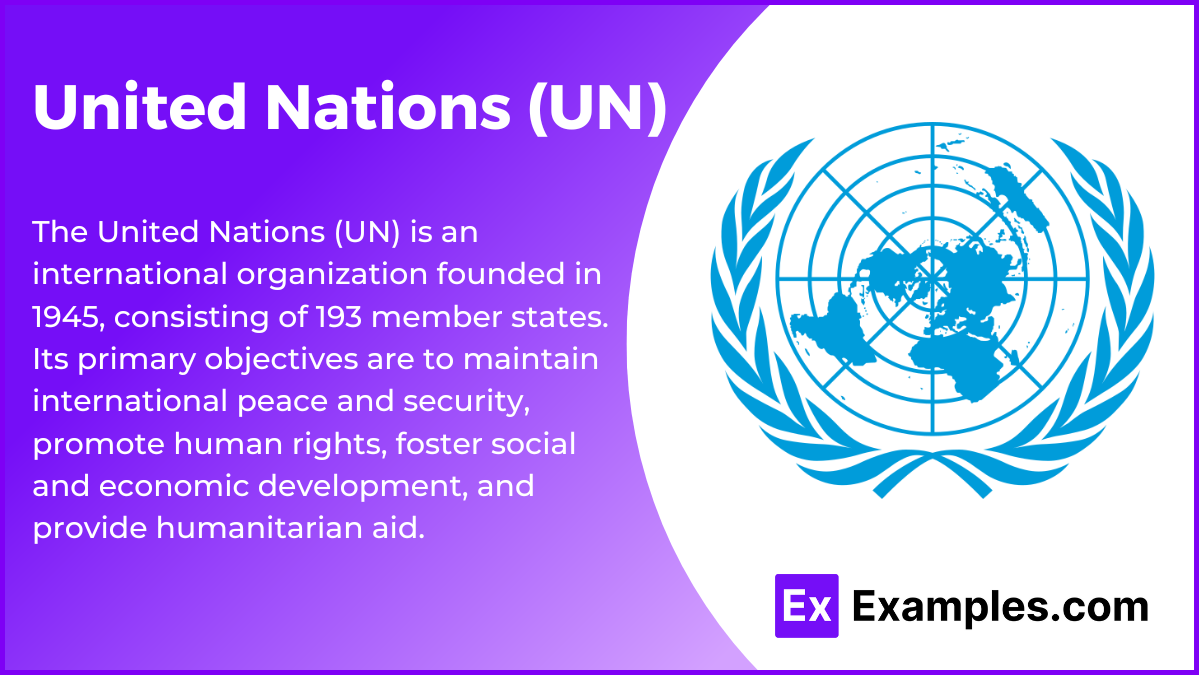
The United Nations (UN) is an international organization founded in 1945, consisting of 193 member states. Its primary objectives are to maintain international peace and security, promote human rights, foster social and economic development, and provide humanitarian aid. The UN operates through various specialized agencies, programs, and bodies, including the General Assembly, the Security Council, and the International Court of Justice.
- Established: 1945
- Purpose: To promote international cooperation and prevent conflicts.
- Key Components:
- General Assembly: All member states have a voice; discusses global issues.
- Security Council: Responsible for maintaining international peace and security; has five permanent members (U.S., U.K., France, Russia, China) with veto power.
- International Court of Justice: Settles disputes between states and gives advisory opinions.
- Impact: Facilitated decolonization, human rights advocacy, and international law development.
2. International Monetary Fund (IMF)
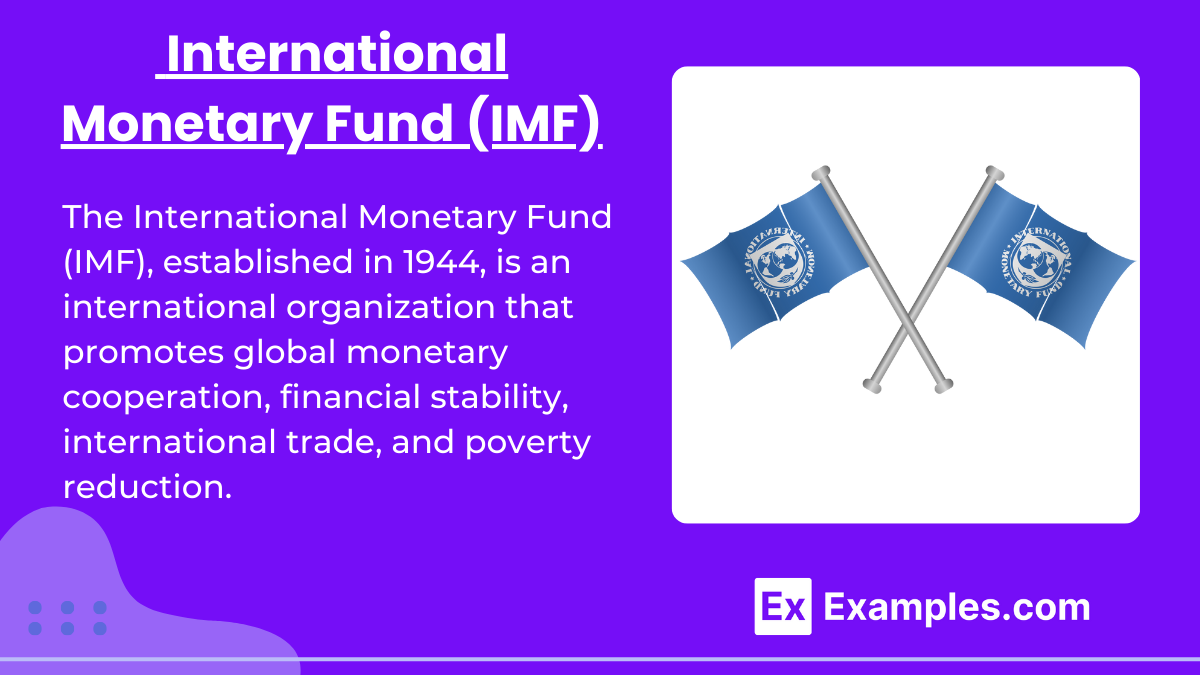
The International Monetary Fund (IMF), established in 1944, is an international organization that promotes global monetary cooperation, financial stability, international trade, high employment, sustainable economic growth, and poverty reduction. The IMF aims to ensure the stability of the international monetary system—the system of exchange rates and international payments that enables countries to transact with each other.
- Established: 1944
- Purpose: To promote global monetary cooperation and financial stability.
- Key Functions:
- Provides financial assistance to countries in need.
- Offers policy advice on economic reforms.
- Impact: Stabilized economies after crises, but criticized for imposing austerity measures.
3. World Bank

The World Bank is an international financial institution established in 1944, primarily aimed at reducing poverty and promoting sustainable economic development around the world. It provides financial and technical assistance to developing countries for development programs, which are expected to improve the economic prospects and quality of life for people in those nations.
- Established: 1944
- Purpose: To provide financial and technical assistance for development projects.
- Key Functions:
- Focuses on reducing poverty and promoting sustainable development.
- Provides loans for infrastructure, education, and health.
- Impact: Contributed to economic development, but faced criticism for its conditions and effectiveness.
4. North Atlantic Treaty Organization (NATO)
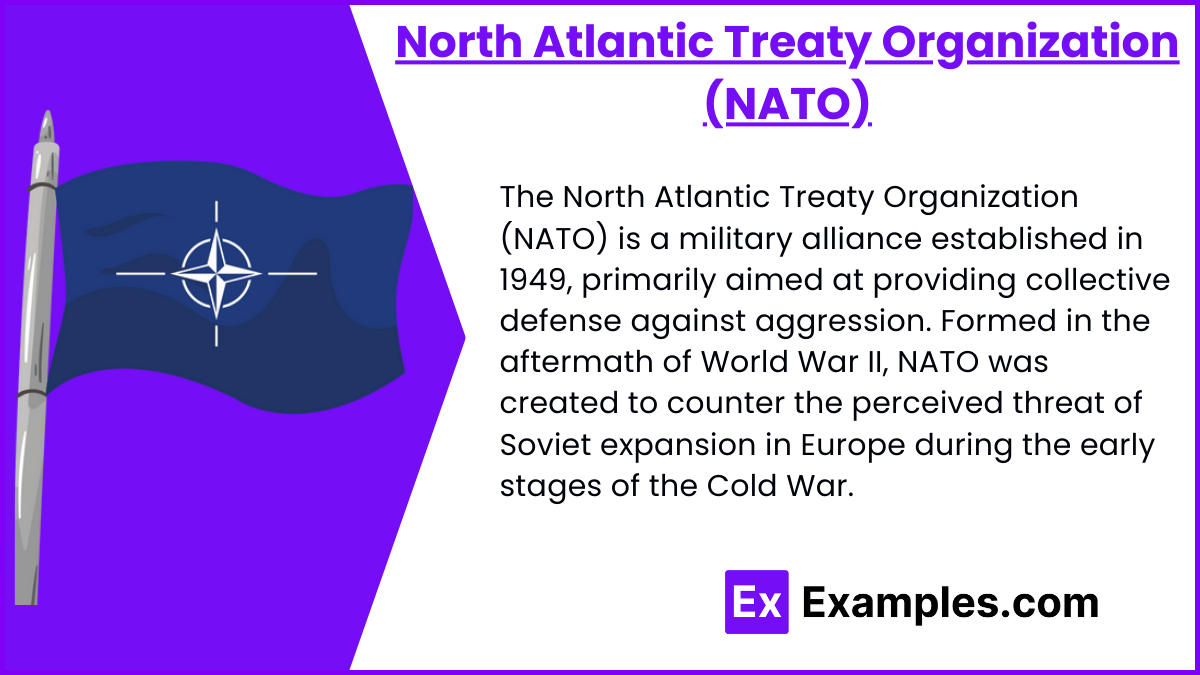
The North Atlantic Treaty Organization (NATO) is a military alliance established in 1949, primarily aimed at providing collective defense against aggression. Formed in the aftermath of World War II, NATO was created to counter the perceived threat of Soviet expansion in Europe during the early stages of the Cold War.
- Established: 1949
- Purpose: A military alliance for collective defense against aggression.
- Key Features:
- Article 5: An attack on one member is considered an attack on all.
- Expansion to include Eastern European countries post-Cold War.
- Impact: Ensured Western security during the Cold War; ongoing debates about its relevance.
5. World Health Organization (WHO)
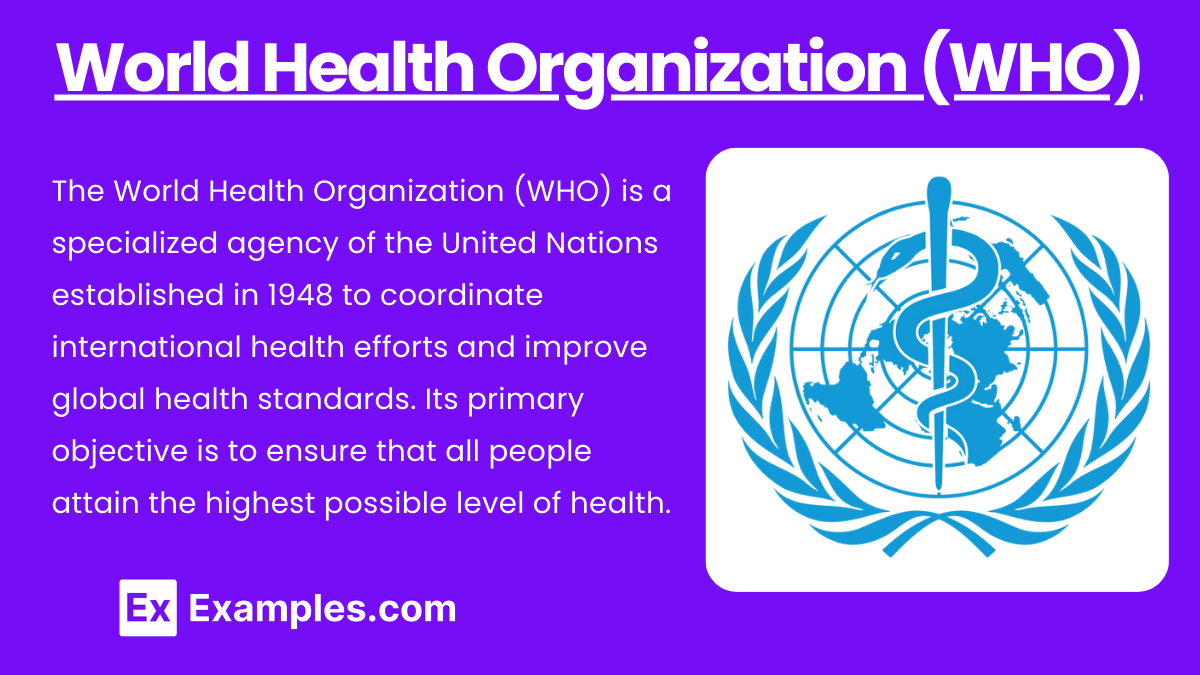
The World Health Organization (WHO) is a specialized agency of the United Nations established in 1948 to coordinate international health efforts and improve global health standards. Its primary objective is to ensure that all people attain the highest possible level of health. The WHO addresses a wide range of health issues, including infectious diseases, non-communicable diseases, health systems, and emergency responses to health crises.
- Established: 1948
- Purpose: To direct international health efforts and respond to health emergencies.
- Key Functions:
- Sets global health standards and policies.
- Coordinates responses to pandemics (e.g., COVID-19).
- Impact: Significant in global health initiatives, though criticized for its handling of various health crises.
Examples
Example 1: African Union (AU)
Founded in 2001, the AU promotes unity and cooperation among African states, addressing issues like peace, security, and economic development.
Example 2: Association of Southeast Asian Nations (ASEAN)
Established in 1967, ASEAN fosters political and economic cooperation among Southeast Asian nations, enhancing regional stability and economic growth.
Example 3:G7 (Group of Seven)
Formed in the 1970s, the G7 is an intergovernmental organization of seven major advanced economies, addressing global economic governance and security issues.
Example 4: Organisation of Islamic Cooperation (OIC)
Founded in 1969, the OIC aims to promote cooperation among Muslim-majority countries, addressing social, political, and economic challenges facing member states.
Example 5: Shanghai Cooperation Organization (SCO)
Established in 2001, the SCO promotes political, economic, and military cooperation among member states, focusing on security and stability in Eurasia.
MCQs
Question 1
Which of the following institutions was established to promote global trade and reduce tariffs?
A) World Health Organization (WHO)
B) World Trade Organization (WTO)
C) International Monetary Fund (IMF)
D) United Nations (UN)
Answer: B) World Trade Organization (WTO)
Explanation: The WTO, established in 1995, focuses on regulating international trade and ensuring fair practices among member countries.
Question 2
What is the primary goal of the African Union (AU)?
A) Economic integration of Europe
B) Addressing global health issues
C) Promoting unity and cooperation among African states
D) Regulating international finance
Answer: C) Promoting unity and cooperation among African states
Explanation: Founded in 2001, the AU aims to enhance political and economic collaboration among African nations for development and stability.
Question 3
The G7 primarily consists of which type of countries?
A) Developing nations
B) Emerging markets
C) Major advanced economies
D) Oil-producing states
Answer: C) Major advanced economies
Explanation: The G7 includes seven leading industrialized countries that collaborate on economic policies and global governance issues, enhancing international cooperation.

